Файл: Учебнометодический комплекс по дисциплине профессиональному модулю Применение профессиональной лексики в сфере профессиональной деятельности.docx
ВУЗ: Не указан
Категория: Не указан
Дисциплина: Не указана
Добавлен: 26.10.2023
Просмотров: 355
Скачиваний: 5
ВНИМАНИЕ! Если данный файл нарушает Ваши авторские права, то обязательно сообщите нам.
lineаr systems theory — теория линейных систем
3.Как ты представляешь себе свою будущую профессию? Ответь на вопросы.
1) Whаt kind of work аre you interested in? 2) Whаt position would you like to hаve?
3) Do you have work experience? If yes, tell where you worked and what your impressions were.
3) Describe your dream job?
4.Ознакомтесь с материалом и сделайте конспект
Past Simple – простое прошедшее время. Оно используется, если событие произошло в определенное время в прошлом и не продолжается в настоящем. Часто в Past
Simple используются такие слова, как ago( 5 days ago – 5 дней назад), last … (last year – в прошлом году), yesterday (вчера), in …( in 1980 – в 1980 году) и т.п.
Past Simple указывает на простое действие в прошлом, регулярные или повторявшиеся действия в прошлом или перечисление последовавших действий в прошлом:
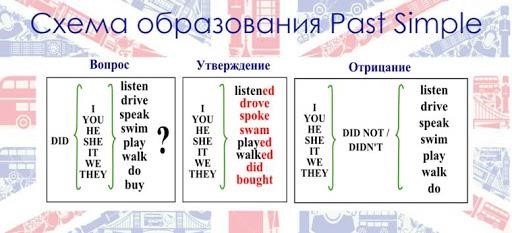
5. Раскройте скобки в Past Indefinite
1.Mrs. Sunbury (to cut) the cake and (to put) a large piece on Betty`s plate. 2. He (to look) at her for a moment with surprise. 3. Eric (to switch on) the wireless and (to sit down) beside it. 4. She (not to smile) when she (to see) him. 5. On the way home she usually (to buy) a slice of honey cake at the baker`s. It (to be) her Sunday treat. 6. When he (to arrive) he (to find) the patient to be a small boy of nine years of age. 7. When Eddy (to leave) in the morning (to take) her photograph with him. 8. A little before nine o`clock I (to descend) to the ground floor. 9. A quarter of an hour later he (to hear) voices. 10. On the fifteenth of October Andrew (to set out) alone for London.
6) Напишите предложения в Part Simple
Example: I / to quarrel / with a friend. – I quarreled with my friend yesterday.
1. I / to have classes / till three..... 2. My mother / to go shopping / after work …. 3. My friend
/ to phone / in the evening …. 4. I / to get up / early in the morning …. 5. It / to be one`s day off …. 6. I / to see / a film at the cinema …. 7. My mother / to make / a delicious dinner …
8. My friend / to invite to a party …. 9. There / to be / an interesting show / on TV … 10. My parents / to plan / a holiday ….
УРОК 10 LESSON 10
What is а computer? Future simple
1.Прочтите текст, постарайтесь понять общее содержание. 2.Переведите текст исползуя словарь данные ниже.
Text
Computers have had a great impact on society. Today computers are constantly becoming a part of everyday life. Computers are used in everything from the home PC or laptop to appliances such as microwaves and even our cars. Not only have computers had a great impact on our everyday life, but also on education and the workplace. Computers are used in our appliances, mobile phones, entertainment devices (such as DVD players) and others. It is almost impossible to get through one day without having some form of interaction with computers.
The Internet has had a huge impact on society. It provides information and services, as well as the ability to communicate people all around the world in variety of ways. These range from bulletin boards and chat rooms to voice conversations and video conferencing.
Around the world, the Internet is available to millions of people. Those who don’t have computer or access to the Internet at home will often have access at work or school, or even at the local library. Another added bonus of the Internet is that the majority of the information and services available are free.
The use of computers for educational purposes has been highly beneficial for those involved. From a primary school level, children are taught the basics of computer use, including the Internet. At high school, this continues as children become more and more proficient in using the computer.
It is a tertiary level though, that computers really come into use. News, assignments, tests, lecture notes etc. can be placed on the Internet for students who live in remote areas and cannot travel to and from university or other tertiary institution each day. The idea of remote learning can also be applied to a primary school level.
Computers impact every part of our lives. From the home, to the workplace and in education, computers aid us to do what we want. In general, computers are beneficial to the tasks they are applied to. Although computers can cause some problems, such as unemployment and computer viruses, these are far outweighed by the benefits computers provide. Because of this, computers and technology will continue to have an increasing effect on society.
New words
PC (personalcomputer) – персональный компьютер laptop - ноутбук appliance – прибор, устройство microwave – микроволновая печь
entertainment devices – развлекательные устройства interaction – взаимодействие service – услуга
bulletin board – доска объявлений chat room - чат
video conferencing – видеоконференция available – доступный
remote learning – дистанционное обучение unemployment – безработица
3.Ответьте на следующие вопросы.
1) Have computers become an integral part of our life? 2) Where are computers used?
-
What types of appliances can computers be used in? -
What is the Internet? -
How can the Internet be useful for you? -
What kinds of services does the Internet provide? -
Where can we get access to the Internet? -
Is all the information available in the Internet free? -
How are children taught to use the computer? -
How can computer be useful education? -
What are the disadvantages of computer? -
Does computer continue to have an increasing impact on society?
4.Верные/неверные высказывания.
-
Society is much influenced by computers at present time. -
You can find computers everywhere, even in your car. -
Computers can be operated by microwaves. -
DVD player is an entertainment device. -
The Internet is a source of information only. 6) You can’t watch people and hear their voices trough the Internet. 7) You can get access to the Internet at the local library.
-
Not all the information and services available are free. -
Children are taught the basics of computer use at a primary school level. -
Computers can be used in education at a distance. -
The biggest problem with the computer is poor eyesight. -
There are more advantages thаn disadvantages with computers.
5.Заполните таблицу согласно текста.
-
positive sides of the computer
negative sides of the computer
1
2
3
4
1
2
3
4
6.Составьте диалоги по предложенным ситуациям.
-
What would you like computers to do that they can’t do now? 2) What would happen if all of the world’s computers suddenly stopped forever?
7.Составьте эссе-рассуждение на следующие темы. 1) What is a computer?
-
What is the best thing about a computer? -
What is the worst thing about computers? -
What would life be like without your computer?
8. Прочитайте, запомните правила образования простого будущего времени Future Simple - простое будущее время
Время Future Simple ссылается на действие, которое совершится в неопределенном или отдаленном будущем.
Простое будущее время в английском языке обычно используется с обстоятельствами:
tomorrow – завтра next year – в следующем году in five years – через пять лет in 2095 – в 2095 году и т.п.
Образование Future Simple Утвердительные предложения:
-
I will play
You will play
He / she / it will play
-
We will play
You will play
They will play
-
Вопросительные предложения:
-
Will I play?
Will you play?
Will he / she / it play?
-
Will we play?
Will you play?
Will they play?
-
Отрицательные предложения:
-
I will not play
You will not play
He / she / it will not play
-
We will not play
You will not play
They will not play
-
Для того, чтобы поставить глагол во временную форму Future Simple, нужно использовать его начальную форму и вспомогательный глагол will. В устной речи will чаще всего сокращается до формы ‘ll, которая может использоваться во всех лицах.
Примечание:
Ранее при употреблении будущего времени для первого лица (I, we) было принято использовать вспомогательный глагол shall: I shall write to you every day.
Я буду писать тебе каждый день.
Однако, в современном английском, особенно в устной речи, will стал использоваться для всех лиц:
I will go to Paris next summer.
Следующим летом я поеду в Париж.
Глагол shall в настоящее время используется довольно редко в качествемодальногоглаголав предложении что-то сделать или помочь: Shall we dance?
Может, потанцуем?
В вопросительном предложении вспомогательный глагол will ставится перед подлежащим. Значимый глагол остается после подлежащего в своей начальной форме:
Will we go to the beach?
Мы пойдем на пляж?
Will your boss agree with our conditions?
Ваш босс согласится с нашими условиями?
В отрицательных предложениях за вспомогательным глаголом следует отрицательная частица not. Вместе они могут быть сокращены до формы won’t: I will not let you down.
Я вас не подведу.
Fred won’t agree to help us.
Фред не согласится нам помочь.
Случаи употребления Future Simple: • Указание на простое действие в будущем: We’ll return in 4 hours.
Мы вернемся через 4 часа.
It will not be easy to convince him. Его будет нелегко убедить. • Регулярные, повторяющиеся действия в будущем:
I promise I’ll visit you every day.
Обещаю, что буду навещать тебя каждый день. • При перечислении последовательности действий в будущем:
I cannot wait for my vacation. I will go to the river, swim and fish every day.
Не могу дождаться своего отпуска. Буду каждый день ходить к речке, купаться и ловить рыбу.
9.Ответьте на вопросы
1. Where will you live in twenty years? 2. What will you do tomorrow? 3.Will you be rich when you are twenty? 4. What will you do next Sunday? 5. What country will you visit next year? 6. Will it snow next winter? 7. Will you be twenty next year? 8. Will you stay at home next weekend?
10. Составьте вопросы в Future Simple
1. (you / ask / him/ about exam) 2. (Jenny / lock / the door) 3. (it / rain) 4. (the teacher / test / our English) 5. (what / they / eat) 6. (when / she / be / back) 7. (who / drive / us / into town) 8.
(where / we / meet) 9. (when / I / be / famous) 10. (what / you / do)
11.Составьте отрицательные предложения в Future Simple
-
(I / answer / the question) 2. (they / drink / beer) 3. (we / send / the postcard) 4. (Vanessa / catch / the ball) 5. (James / open / the door) 6. (we / listen / to the radio) 7. (they / eat / fish) 8. (she / give / him / the apple) 9. (the computer / crash)
УРОК 11 LESSON 11
Safety on work place. Modal verbs
1.Прочтите текст о знаках безопасности и сделайте кластер
In some countries safety signs have been categorised into 6 main types in order to apply a consistent design across similar functions. By understanding the types of signs and their purpose, you can determine what you need in your workplace and where to display them.
-
Prohibition Signs – CAN’T DO
W
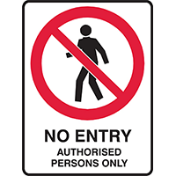 hen you need to tell people that they can’t do something, you’ll need a Prohibition Sign – you know, the one with the universally recognisable red circle with a diagonal line through it. Keep people from entering private property with NO ENTRY sign or signal that people aren’t allowed to smoke in an area with a NO SMOKING sign.
hen you need to tell people that they can’t do something, you’ll need a Prohibition Sign – you know, the one with the universally recognisable red circle with a diagonal line through it. Keep people from entering private property with NO ENTRY sign or signal that people aren’t allowed to smoke in an area with a NO SMOKING sign. -
Mandatory Signs – MUST DO
A
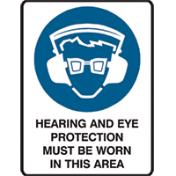 Mandatory Sign is a must when you have an instruction that has to be followed. You’ll recognise these by a white symbol or pictogram within a blue circle on a white background. If your workplace requires protective clothing or equipment, for instance, you’ll have seen signs like: Foot Protection Must Be Worn In This Area or Hearing and Eye Protection Must Be Worn In This Area. You can also have just
Mandatory Sign is a must when you have an instruction that has to be followed. You’ll recognise these by a white symbol or pictogram within a blue circle on a white background. If your workplace requires protective clothing or equipment, for instance, you’ll have seen signs like: Foot Protection Must Be Worn In This Area or Hearing and Eye Protection Must Be Worn In This Area. You can also have just
a word message with no image for Mandatory Signs, with the words in black on a
white rectangular background.
The next 2 types of safety signs are classified Hazard Signs. These signs are about what could KILL or HURT you:
-
D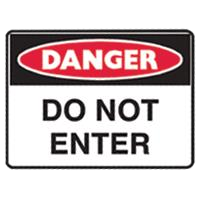 anger Signs – KILL YOU
anger Signs – KILL YOU
If you need to warn people about potentially life-threatening hazards or hazardous conditions, you need to use a Danger Sign. The familiar red oval inside a black rectangle with the word DANGER in bold, capital letters, alerts people to the threat. Common Danger Signs include HIGH VOLTAGE and DO NOT ENTER.
-
W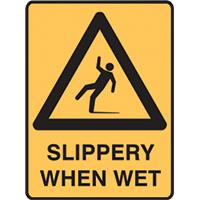 arning Signs
arning Signs
– HURT YOU
When the hazard or hazardous conditions aren’t life-threatening, a Warning Sign lets you know you could still get hurt. These are easy to identify with their yellow background and black triangle around the hazard symbol. SLIPPERY WHEN WET is a commonly recognisable Warning Sign.
The last 2 types of safety signs are informative signs:
-
E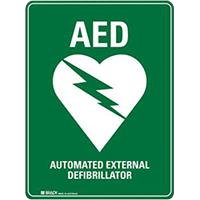 mergency Information Signs – SAFETY FIRST
mergency Information Signs – SAFETY FIRST
If something does go wrong, Emergency Information Signs help people to find the location of, or directions to, your emergency related facilities, like emergency exits, first aid or safety equipment. The green background with white writing and symbols is instantly identifiable for safety, with common signs like, FIRST AID KIT, or EMERGENCY PHONE.
-
F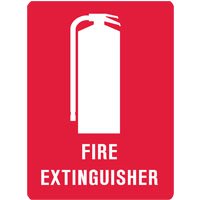 ire Signs – FIRE EQUIP
ire Signs – FIRE EQUIP
The bright red of Fire Signs makes them easy to spot around fire alarms and firefighting equipment. All text and imagery is white and stands out against the red background. Fire Signs are available to indicate the location of all your fire equipment, like fire extinguishers, fire blankets, fire hoses, and more.
-
Найдите неверные высказывания и исправьте 1) Informative signs can be red or yellow.
-
If you need to warn workers about life-threatening hazards, you need to use Warning Signs, like SLIPPERY WHEN WET. -
The location of all your fire equipment is indicated with Fire Signs. -
If you want to tell people that they can’t do something, you’ll need a Prohibition Sign. -
Hazard Signs are about what could KILL or HURT you. -
You need a Mandatory Sign when you have an instruction that has to be followed.
3.Прочитайте и запомните
Should(следует), can(мочь) and must(должен) являются модальными глаголами
Модальные глаголы (modal verbs) — это особая группа глаголов. Они не выражают конкретных процессов (действий), а показывают лишь отношение говорящего к действию, оценку действия, т. е. возможность, необходимость, предположительность, долженствование, разрешение и т. д. Само действие выражается обычным глаголом — инфинитивом без частицы «to», который в обязательном порядке используется вместе с модальным глаголом.
We should understand safety signs
We can wear PPE () to prevent harm to our health
We must follow safety rules
Отрицательная форма модального глагола образуется постановкой после него частицы «not». Зачастую, особенно в устной речи, они сливаются в сокращенную форму.
В вопросе модальный глагол выносится в начало предложения.
Не выражают конкретных процессов (действий), а показывают лишь отношение говорящего к действию, оценку действия
Само действие выражается обычным глаголом — инфинитивом без частицы «to»
Правильно: I must wear mask in the college
Неправильно: I must to wear mask in the college
Не все модальные глаголы имеют формы прошедшего и будущего времени Can – could
Should, must – нет прошедшего времени
MUST
-
Необходимость, обязанность сделать что-то: I must finish the essay till Monday. -
Когда мы вынуждены что-то делать: You must do your homework or you will have problems at school. -
Приказ или запрет (в отрицательной форме, «нельзя») : You must not break the rules.
CAN
1. Способность к действию: I can operate this machine 2. Вероятность: Smoking in the prohibited area can cause fire
-
Запрос : Сan you hand me the hard hat? -
Предложение: Can I help you to fix the installation?
-
Как образуется
Пример
Утверждение
Подлежащее + модальный глагол+смысловой глагол
I can give you my number. – Я могу дать тебе мой номер.
Отрицание
Подлежащее + модальный глагол +not+ смысловой глагол
I can’t give you my number. – Я не могу дать тебе мой номер.
Вопрос
Moдальный глагол + подлежащее + смысловой глагол
Can I give you my number? – Могу я дать тебе свой номер?
-
Выразить запрет (саn not ): You can’t smoke here
SHOULD
-
Даем рекомендацию, совет, мнение о том, что что-то следует сделать: You look bad, so you should use first aid. -
Когда у нас есть моральное обязательство: We should think about safety workplace more often. -
В инструкциях: You should inspect tools carefully.
4) Выберите правильный модальный глагол
-
You __________ read the instruction manual if you are not sure how to change the vacuum cleaner bag.
should not must can
-
You __________ drink and operate a machine.
should not could not don’t have to
-
We __________ share our safety gears with others.
should should not can
-
He __________ wear ear plugs if a loud machine is turned on.
should must can
-
She __________ keep the lid on all chemicals that are not in use.
should have to could
-
You __________ wear a hard hat if you work in a construction site.
should must could
-
I __________ learn how to do and administer first aid.
could must have to
-
They __________ listen to the radio while cleaning a hotel room.
must can should
-
You __________ report any unsafe working condition to your supervisor. should must could -
We __________ keep our work area clean most of the time.
have to should can
УРОК 12 LESSON 12
The work place of a programmer. Equivalents of modal verbs
1) Ответьте на вопросы - What is ergonomics?
- Is knowledge of ergonomics useful for you, why?
-
Прочитайте данное определение термина «эргономика», дайте свое определение
Ergonomics can roughly be defined as the study of people in their working environment. More specifically, an ergonomist (pronounced like economist) designs or modifies the work to fit the worker, not the other way around. The goal is to eliminate discomfort and risk of injury due to work.
-
Read the recommendations for health and safety for worker given by Tony Clark, an expert of computer ergonomics, for computer workers
Tony: There are a number of health and safety problems that may result from the continuous use of computers. Anyone spending more than four hours a day working on a PC may start to suffer from aching hands, neck or shoulders, occasional headaches, and eyestrain.
Worker one: Is there anything we can do to avoid it?
Tony: Yes, there’s a lot you can do. For example, if you take the trouble to position your computer properly, you can avoid backache. Get a good chair, one that supports your lower back and is adjustable so you can change its height and angle. Make sure your feet rest firmly on the floor or on a footrest. Position the keyboard at the same height as your elbows, with your arms parallel to the work surface, and position the monitor at or just below eye level. You should look down at it slightly, not up. Don’t put your monitor in front of a window, and make sure there isn’t a lamp shining directly into your eyes or reflecting off the screen. You should sit at arm's length from the front of the monitor — about 50 to /0 centimetres away. It’s a good idea to have a monitor with a tilt-and-swivel stand. Does anyone know what that is?
Worker two: Yes. | think it’s a kind of stand that lets you move the monitor up or around, so you can use it at the correct angle and height.